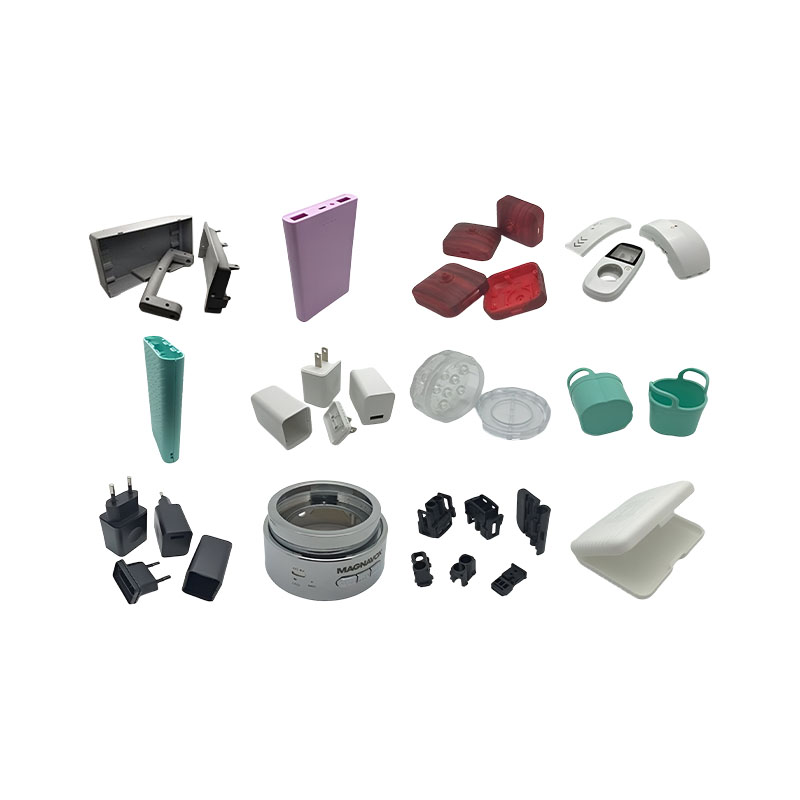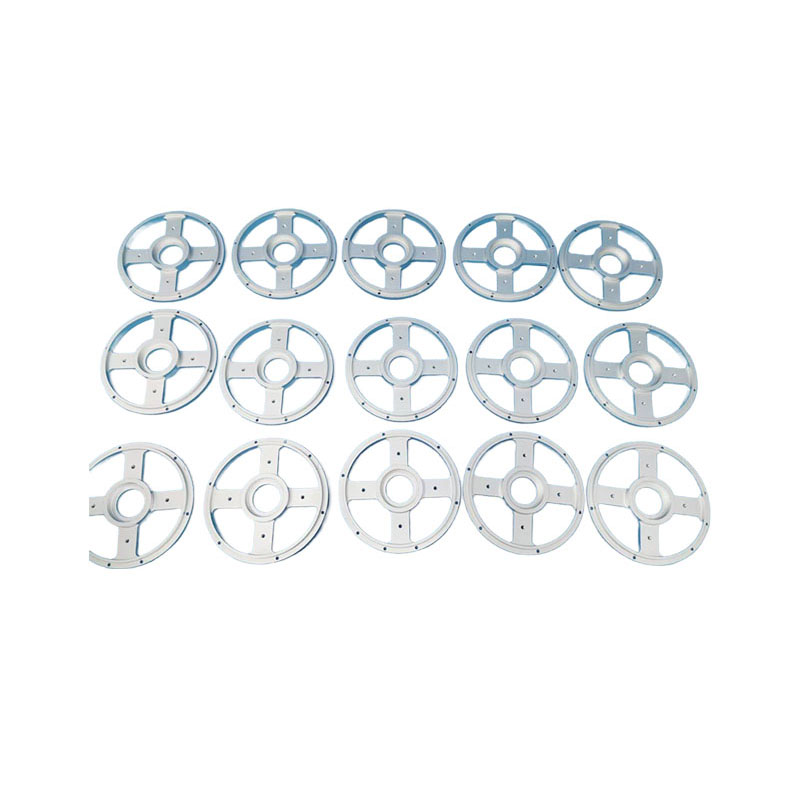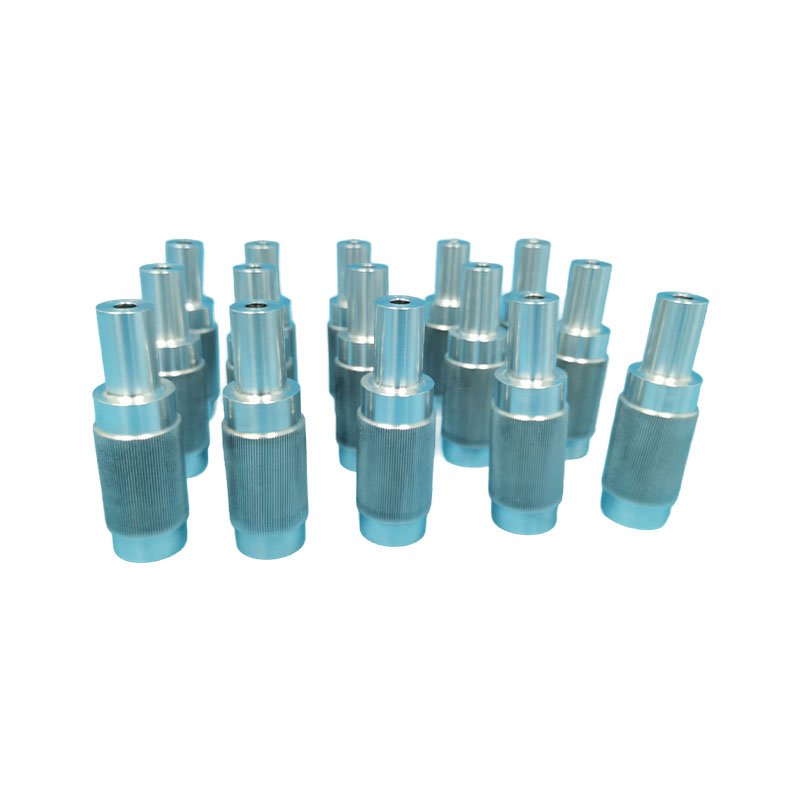How to improve the rough surface of stainless steel CNC turning?
Release Time : 2025-06-13
During the stainless steel CNC turning process, poor surface roughness of the workpiece is a common problem, which is related to many factors such as the processing characteristics of the stainless steel material itself, the tool state, the selection of cutting parameters and the process arrangement. Surface roughness not only affects the appearance quality of the workpiece, but may also have an adverse effect on its matching accuracy, wear resistance and corrosion resistance. Therefore, it is necessary to start from each link of the processing and take targeted improvement measures. The following is a detailed description of the specific solution from the perspective of practical operation.
The selection and maintenance of the tool is the basic link to improve the surface roughness. Stainless steel materials have the characteristics of strong tendency to work hardening and poor thermal conductivity. If the tool performance is insufficient, it is very easy to produce bonding wear or chipping during the cutting process, resulting in furrows or scratches on the workpiece surface. In actual processing, tool materials with good wear resistance and strong anti-adhesion should be selected, such as coated carbide or ceramic tools. The coating can reduce the friction between the tool and the chips and reduce the cutting heat generation. At the same time, the geometric parameters of the tool need to be reasonably designed. A larger rake angle can reduce cutting resistance, a smaller back angle can increase tool support stiffness, and the sharpness of the cutting edge directly affects the stability of cutting. The tool wear needs to be checked regularly. When the blade is slightly chipped or worn, the tool should be replaced or sharpened in time to avoid surface roughness caused by tool defects.
The optimization of cutting parameters plays a key role in surface quality. If the combination of cutting speed, feed rate and back cutting amount is unreasonable, the vibration during the cutting process will increase, the cutting heat accumulation will increase, and the surface roughness will increase. For stainless steel materials, the cutting speed should not be too high to avoid aggravating the work hardening due to the increase in cutting temperature; the feed rate should also be controlled within a small range. Excessive feed rate will increase the cutting residual area and form obvious knife marks; the back cutting amount should be set in layers according to the workpiece precision requirements. During rough processing, a larger back cutting amount can be used to quickly remove the excess, and during fine processing, a smaller back cutting amount can be used to reduce the impact of cutting force and cutting heat on the surface. By adjusting the parameters to keep the cutting process stable, reduce vibration and thermal deformation, the surface roughness can be effectively improved.
The reasonable application of cooling and lubrication measures can significantly improve the surface quality. When stainless steel is turned, the temperature of the cutting zone is high, and the chips and the tool are prone to adhesion, resulting in tearing marks on the surface. Selecting cutting fluids with good extreme pressure and anti-wear properties, such as extreme pressure emulsions or synthetic cutting fluids, can form a firm lubricating film on the surface of the tool and the workpiece to reduce friction and adhesion; at the same time, sufficient cutting fluid supply can take away the cutting heat in time, reduce the workpiece temperature, and inhibit the phenomenon of work hardening. In terms of cooling methods, high-pressure cooling or internal cooling tools can be used to make the cutting fluid act directly on the cutting area, enhance the cooling and lubrication effect, avoid chips adhering to the tool due to local overheating, and thus reduce the occurrence of surface roughness problems.
Optimizing the clamping method is an important link to avoid workpiece deformation and ensure surface quality. Stainless steel parts, especially thin-walled or slender parts, are prone to elastic deformation if the clamping force is unevenly distributed during clamping, resulting in ripples or uneven surfaces after processing. In actual operation, clamping tools with good rigidity and large contact area, such as soft claws and elastic sleeves, should be used to make the clamping force act evenly on the workpiece surface to avoid excessive force on a single point. For large or complex structural parts, auxiliary support points can be added to enhance the rigidity of the workpiece and reduce vibration during the cutting process. When clamping, attention should also be paid to the cleanliness of the workpiece positioning reference to ensure stable clamping and avoid deterioration of surface roughness due to loosening or displacement of the workpiece.
Reasonable planning of the processing route can control the surface quality from the process. For stainless steel parts with high precision requirements, the principle of separation of roughing and finishing should be followed. Roughing removes most of the excess. At this time, a larger cutting amount is allowed, but a suitable allowance needs to be reserved for finishing; small cutting amount is used for finishing, and surface processing is completed with lower cutting force and cutting temperature to reduce deformation accumulation during processing. In addition, for stainless steel materials that are prone to work hardening, stress relief treatment, such as low-temperature annealing, can be arranged between processes to eliminate the influence of internal stress on surface quality. Reasonable arrangement of processing sequence, first processing the reference surface and then processing other surfaces, can also provide a stable positioning reference for subsequent processing, avoiding the problem of surface roughness caused by inconsistent reference.
The supplement of post-processing process can further improve the surface finish. If the surface roughness of the workpiece after turning still does not meet the requirements, the appropriate post-processing method can be selected according to the use requirements of the parts. For parts with general precision requirements, mechanical grinding or polishing can be used to remove tiny knife marks and protrusions on the surface through the friction between the grinding paste and the grinding tool; for parts with high corrosion resistance requirements, electrolytic polishing or passivation treatment can be performed, which can not only improve the surface roughness, but also form a dense oxide film on the surface to improve corrosion resistance. The post-processing process needs to be selected according to the stainless steel material and surface requirements. Pay attention to controlling the processing parameters during operation to avoid adverse effects on the size and performance of the workpiece.
The operator's experience accumulation and process monitoring are also indispensable. During the stainless steel CNC turning process, the operator needs to closely observe the cutting status, such as chip shape, cutting sound and workpiece surface color changes, and promptly discover hidden dangers that may cause surface roughness. For example, when the chips are abnormally fragmented or wrapped in ribbons, it may be due to improper cutting parameters or tool wear, which needs to be adjusted or replaced in time; when bright spots or local discoloration appear on the workpiece surface, it may be due to excessive cutting temperature, and the cooling amount should be increased or the cutting speed should be reduced. Through real-time monitoring and experience judgment, operators can dynamically adjust process parameters during processing to make up for the deficiencies in program settings and further ensure the surface processing quality through manual intervention.
In short, improving the surface roughness of stainless steel CNC turning requires comprehensive consideration of material properties, tool performance, process parameters and operation details, and coordinated optimization of all links from clamping, cutting, cooling to post-processing. Only by fully understanding the difficulties of stainless steel processing, taking targeted measures, and combining the experience feedback of operators, can the surface quality be effectively improved in actual production, ensuring that the workpiece meets the accuracy and use requirements, and avoiding the impact of surface roughness on product performance and production efficiency.







